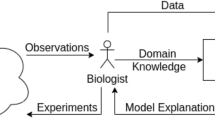Abstract
Neural network technology is experiencing rapid growth and is receiving considerable attention from almost every field of science and engineering. The attraction is due to the successful application of neural network techniques to several real world problems. Neural networks have not yet found widespread application in weather forecasting. The reason for this has been the difficulty in obtaining suitable weather forecasting data sets. In this paper we describe our experience in applying neural network techniques for acquiring the necessary knowledge to predict the weather conditions of Melbourne City and its suburbs in Australia during a 24 hour period beginning at 9 am local time. The accuracy of forecasts produced by a given forecasting procedure typically varies with factors such as geographical location, season, categories of weather, quality of input data, lead time and validity time. Two types of weather data sets assembled from the archives of the Australian Commonwealth Bureau of Meteorology are used for training the neural network. The results of the experiments are competitive and are discussed.
Similar content being viewed by others
References
Gorman RP, Sejnowski TJ. Analysis of hidden units in a layered network trained to classify sonar signals.Neural Networks 1988; 1: 75–90
Waibel A, Hanazawa T, Hinton G, Shikano K, Lang KJ. Phoneme recognition using time-delay neural networks.IEEE Transactions on ASSP 1988; 37: 328–339
Barnard E, Casasent D. A comparison between criterion functions for linear classifiers, with an application to neural nets.IEEE Transactions on Systems, Man and Cybernetics 1988
Burr DJ. Experiments on neural net recognition of spoken and written text.IEEE Transactions on ASSP 1988; 36: 1162–1168
Rumelhart DF, Hinton GE, Williams RJ. Learning internal representations by error propagation.Parallel Distributed Processing. Cambridge, MA: MIT Press 1986, 318–362
Lippman RP. An introduction to computing with Neural Nets.IEEE ASSP Magazine 1987; 4–22
Tapp RG, Woodcock F, Mills GA. The application of model output statistics to precipitation prediction in Australia.Monthly Weather Review 1986; 114: 50–61
Fraedrich K, Leslie LM. Combining predictive schemes in short-term forecasting.Monthly Weather Review 1987; 115: 1640–1644
Brier GW. Verification of forecasts expressed in terms of probability.Monthly Weather Review 1950; 79: 1–3
Michie D. Current developments in expert systems. In:Applications of Expert Systems, JR Quinlan (ed): Turing Institute Press/Addison-Wesley, 1987, 137–156
Hartvigsen G, Johansen D. Co-operation in a distributed artificial intelligence environment: the StormCast application.Engineering Applications of Artificial Intelligence 1990; 3: 229
Lindley CA, Chung CYC, Kumar VR. An evaluation of automatic and manual knowledge acquisition techniques for weather forecast operations.Report, CSIRO Division of Information Technology, Sydney, Australia, December 1991
Powell MJD. Restart procedures for the conjugate gradient method.Mathematical Programming 1977; 12: 241–254
Quinlan JR. Simplifying decision trees.International Journal on Man-Machine Studies 1987; 27: 221–234
Clarke P, Niblett T. The CN2 induction algorithm.Machine Learning 1989; 3(4): 261–283
Kumar VR, Chung, CYC, Lindley CA. Learning to perform weather forecasting operations. In:Proceedings Fourth Scandinavian Conference on Artificial Intelligence, Sweden, May 1993
Mason I. A model for assessment of weather forecasts.Australian Meteorological Magazine 1982; 30: 291–302
Author information
Authors and Affiliations
Rights and permissions
About this article
Cite this article
Chung, C.Y.C., Kumar, V.R. Knowledge acquisition using a neural network for a weather forecasting knowledge-based system. Neural Comput & Applic 1, 215–223 (1993). https://doi.org/10.1007/BF01414951
Received:
Issue Date:
DOI: https://doi.org/10.1007/BF01414951




